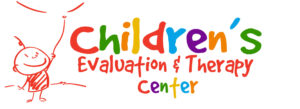DOES MY CHILD NEED SERVICES?
Feeding Difficulty
- arch their back or stiffen when feeding
- cry or fuss when feeding
- fall asleep when feeding
- have problems breastfeeding
- have trouble breathing while eating and drinking
- refuse to eat or drink
- eat only certain textures, such as soft food or crunchy food
- take a long time to eat
- pocket (which means to hold food in their mouth)
- have problems chewing
- cough or gag during meals
- drool a lot or have liquid come out of their mouth or nose
- get stuffy during meals
- have a gurgly, hoarse, or breathy voice during or after meals
- spit up or throw up a lot
- are not gaining weight or growing
Child appears clumsy or uncoordinated
- Difficulty climbing stairs without a rail past the age of three and descending past the age of five
- Inability to coordinate both sides of the body and understand the concept of left and right
- Balance issues
- Troubles throwing and catching balls past the age of five
- Trouble holding a pencil or spoon
- Difficulty using a straw or spoon past the age of two
- Trouble drawing, coloring or using scissors
- Difficulty manipulating zippers, buttons and shoelaces to get dressed
Visual Processing
- Difficulty understanding the concept of time
- Frequently forgetting letters or numbers or reversing them when writing them down
- Below average reading comprehension
- Difficulty following moving objects with their eyes
Oral Motor or Oral Sensory Skills
- Excessive drooling
- Chewing food in the front of the mouth instead of using the molars
- Difficulty drinking from a cup past the age of two
- Inability or difficulty drinking from a straw past the age of two
- Losing large amounts of liquid or food from their mouth after drinking, chewing or breastfeeding
- The child has a cleft lip or palate
- Tongue-Tie
- Mouth Breathing
- Bite that doesn’t fully close
Social Interaction Skills
- Trouble engaging and interacting with family and peers
- Difficulty adapting to new and unfamiliar environments
- Delayed speech and language skills
- Exclusively focusing on one subject of interest for a long time
- Inability to cope with emotions and learning challenges
- The child has difficulty communicating with others socially
Play Skills
- Relying on adult guidance to initiate play
- Short attention spans
- Participating in repetitive play for long periods
- Experiencing difficulties with imitative play
- Refusing to play with peers or siblings
Focus
- Fidgeting, squirming or getting up to wander around when asked or expected to sit still
- Having emotional reactions to loud noises, specific movements and other sensory stimuli
- Easily distracted by visual or auditory stimuli
- Frequent and unpredictable meltdowns
- Difficulty accepting or adjusting to change
Limited Language Skills
- Does not smile or interact with others (birth and older)
- Does not babble (4–6 months)
- Makes only a few sounds or gestures, like reaching (7–9 months)
- Does not understand what others say (10 months – 2 years)
- Says only a few words (19 months – 2 years)
- Does not put words together to make sentences (19 months – 3 years)
- Speaks using words that are not easily understood by others (3–4 years)
- Has trouble with early reading skills, like pretending to read or finding the front of a book (4–5 years)
Difficulty Pronouncing Sounds
- The child’s speech is difficult to understand
- The child is omitting syllables or sounds in words
- Speech errors are noticed during conversation
- Less than 50 percent intelligible to unfamiliar listeners by the age of 2
- Unfamiliar listeners can understand less than 75 percent of what 3-year-old says
- Inconsistent productions of the same target sounds or words
Stuttering
- Repeats first sounds of words—”b-b-b-ball” for “ball”
- Stretches sounds out—”f-f-f-f-farm” for “farm”
- Significantly rapid speech rate
- Repeating sounds, syllables, or words.
- Difficulty starting a phrase or sentence
- Broken words or emphasis on syllables or sounds in a word
- Anxiety around the act of speaking itself
- Tension and struggle of the face to create sounds
- Increased stuttering when excited, tired, or facing stress
- Using interjections such as “like” or “um” and pauses to link words together
Hearing Loss
- By 12 months: not using gestures or acknowledging sounds, and won’t respond when you call their name.
- By 18 months: has difficulty imitating sounds and following simple directions
- By 2 years: only able to imitate speech or use words and sounds repeatedly, can’t use language spontaneously, and starts developing an unusual vocal tone.
- Has difficulty paying attention
- Asks to clarify instructions
- Struggles to tell sounds apart
- Listens to music or watches TV at abnormally loud volumes
- Turns their head to face the direction of a sound
- Talks in a very soft or very loud voice
If you have any of these concerns, request an evaluation with one of our Speech and Language Pathologists or Occupational Therapists today.
